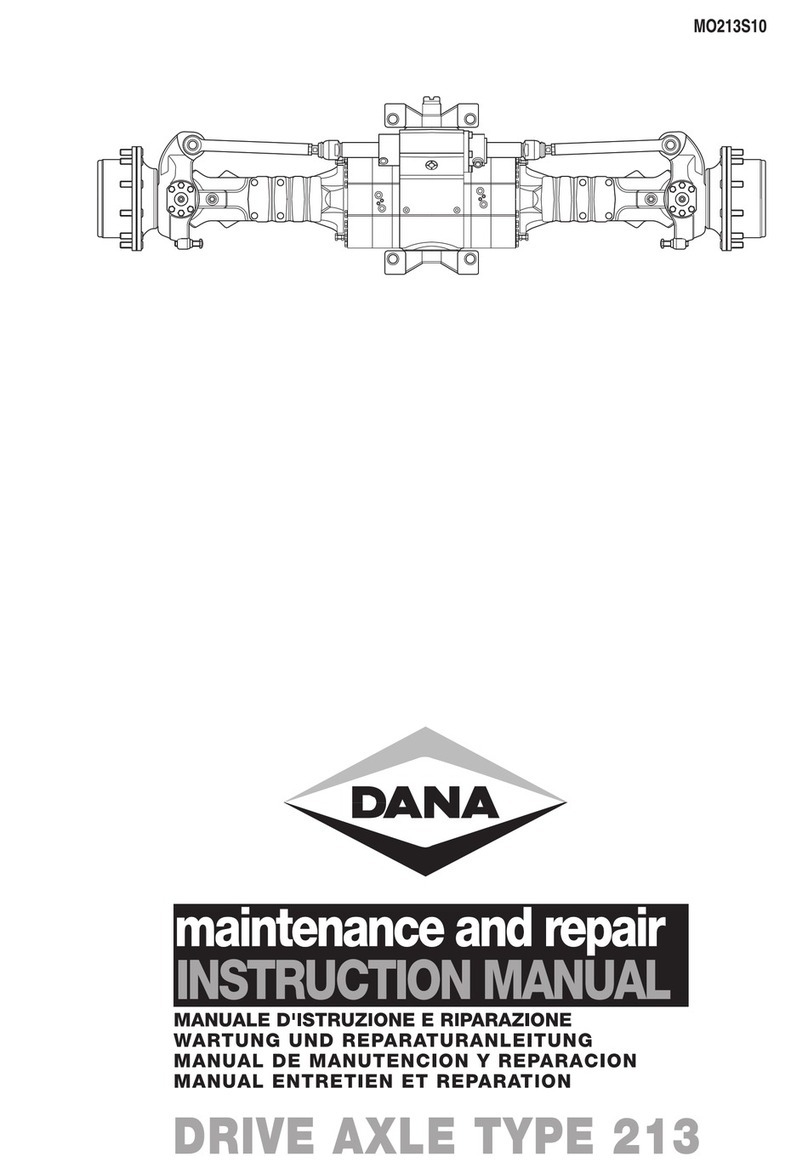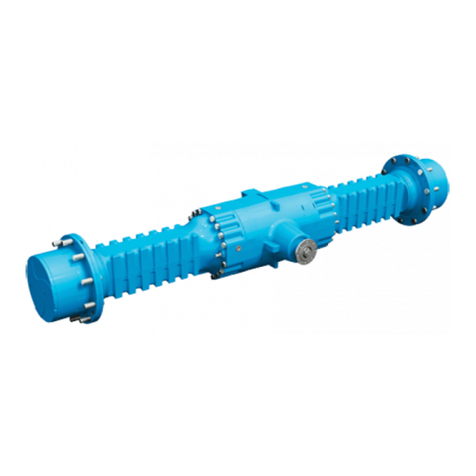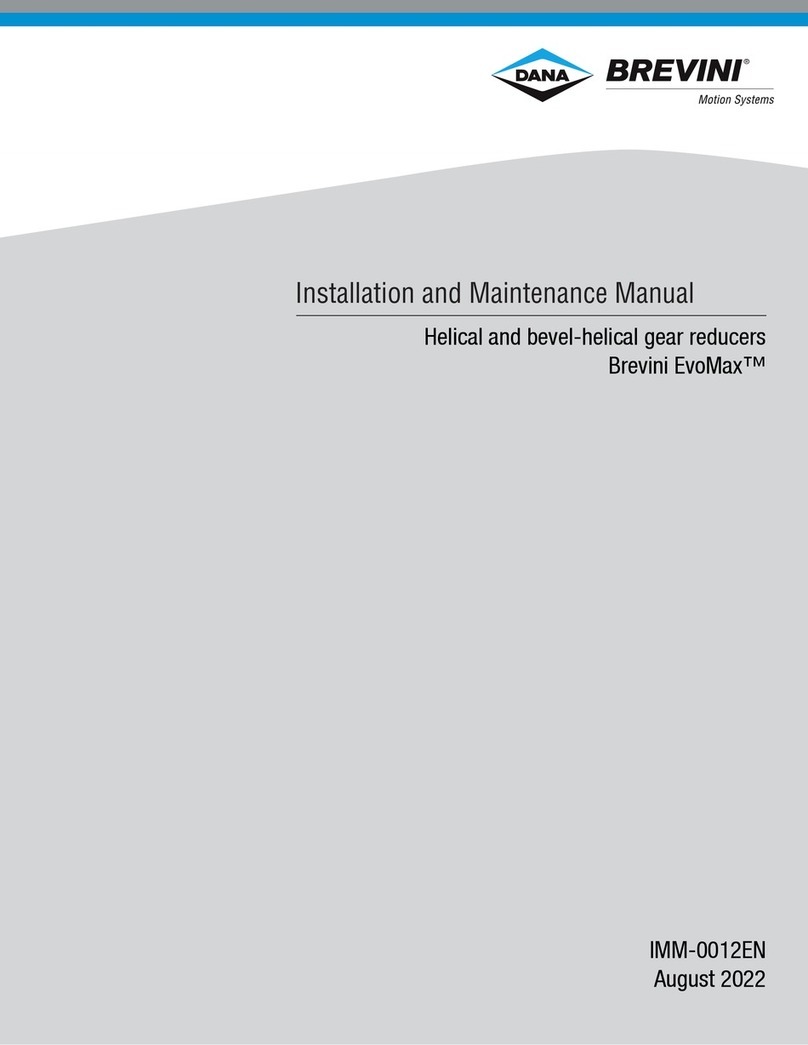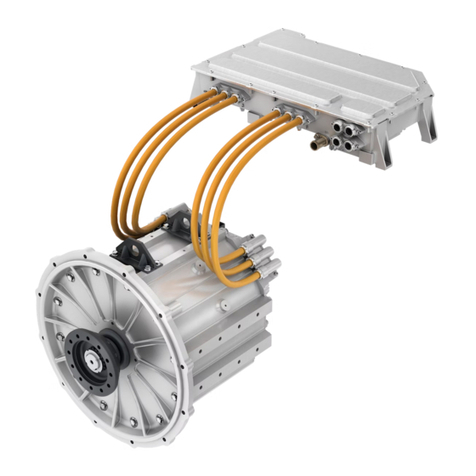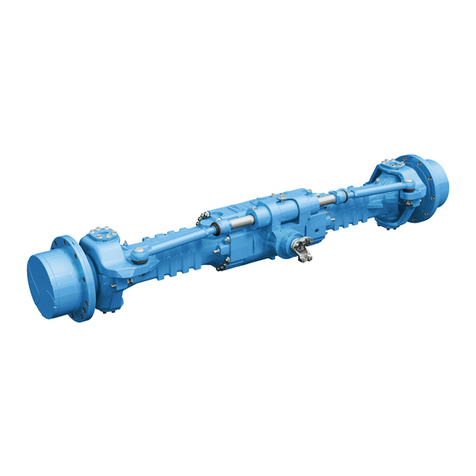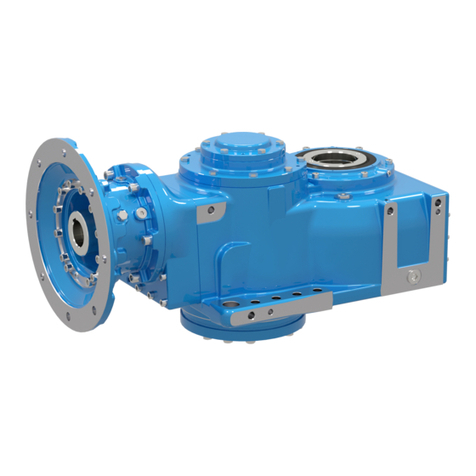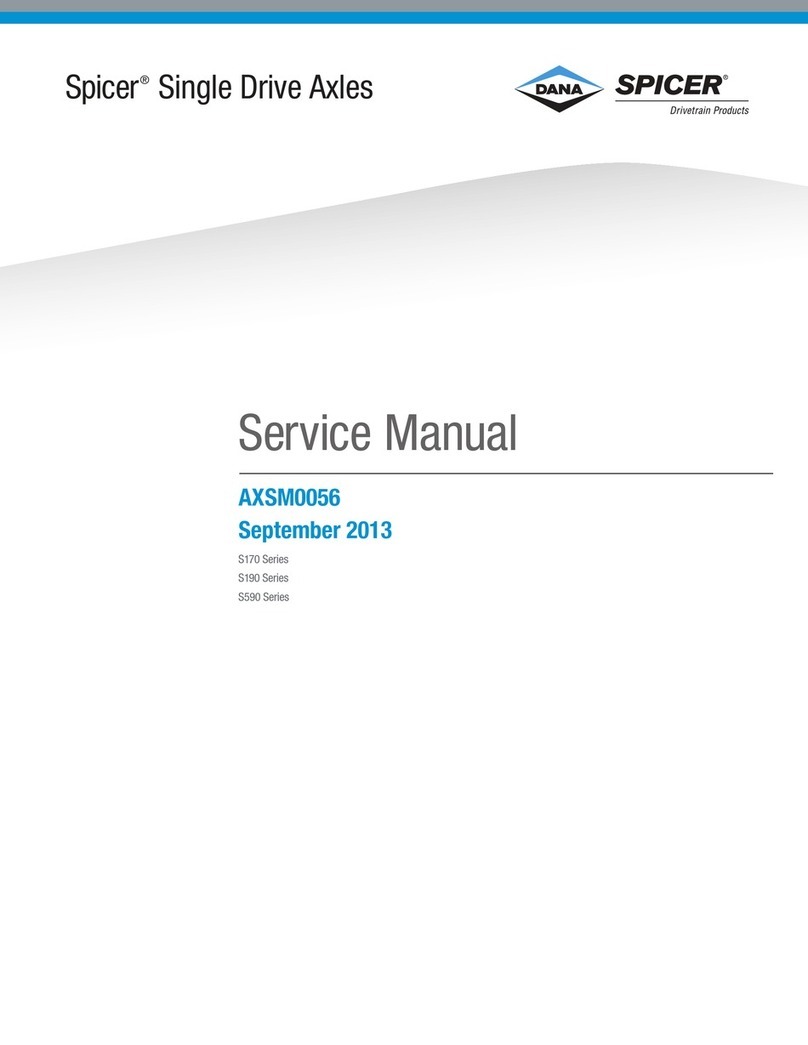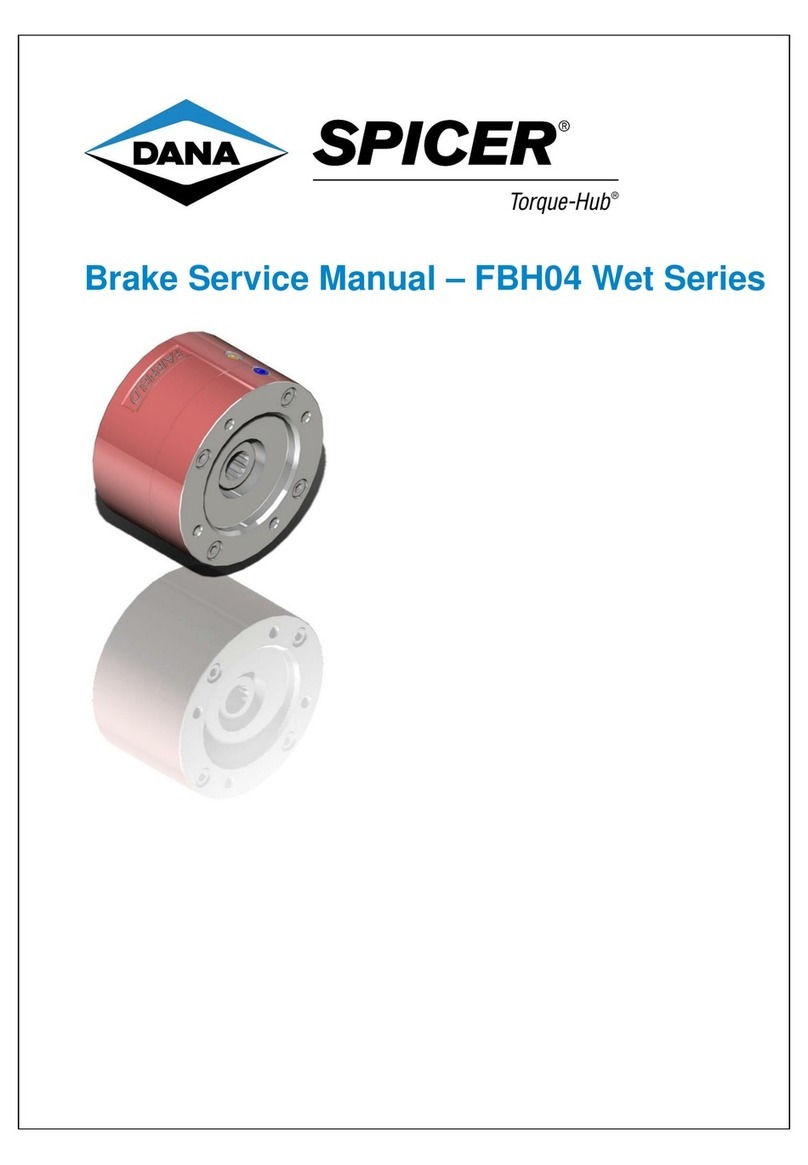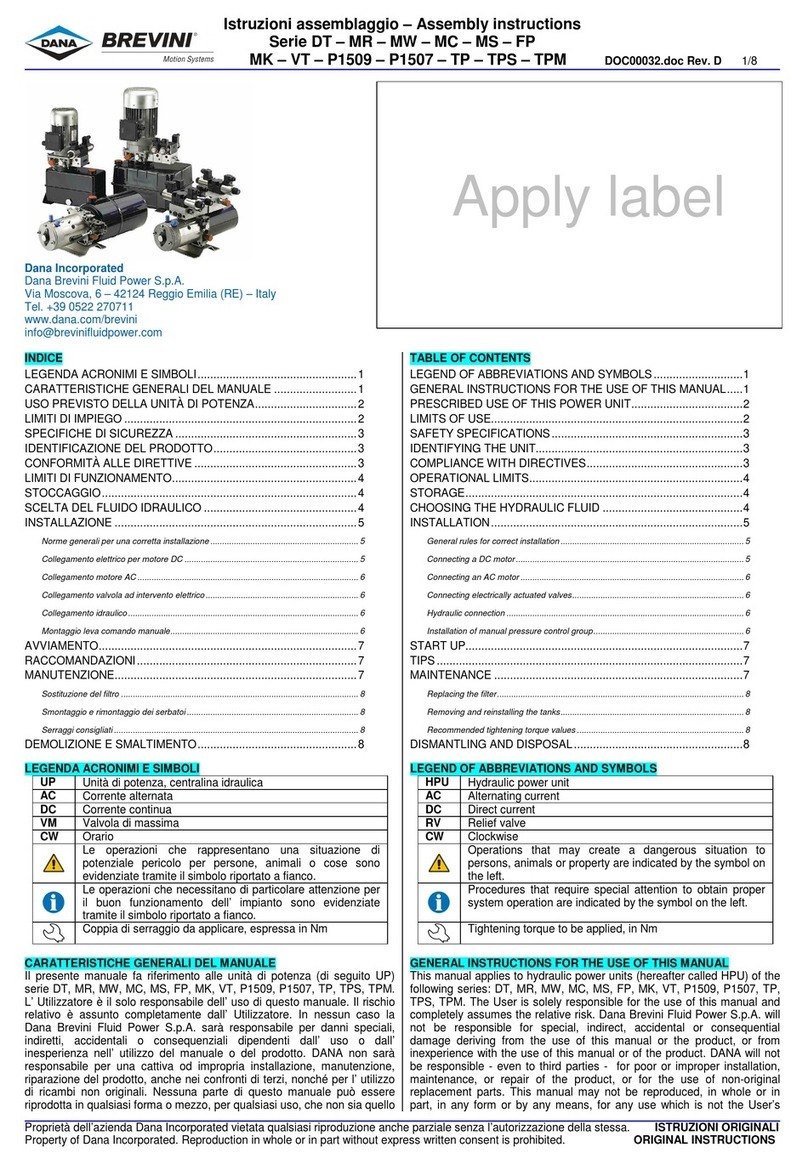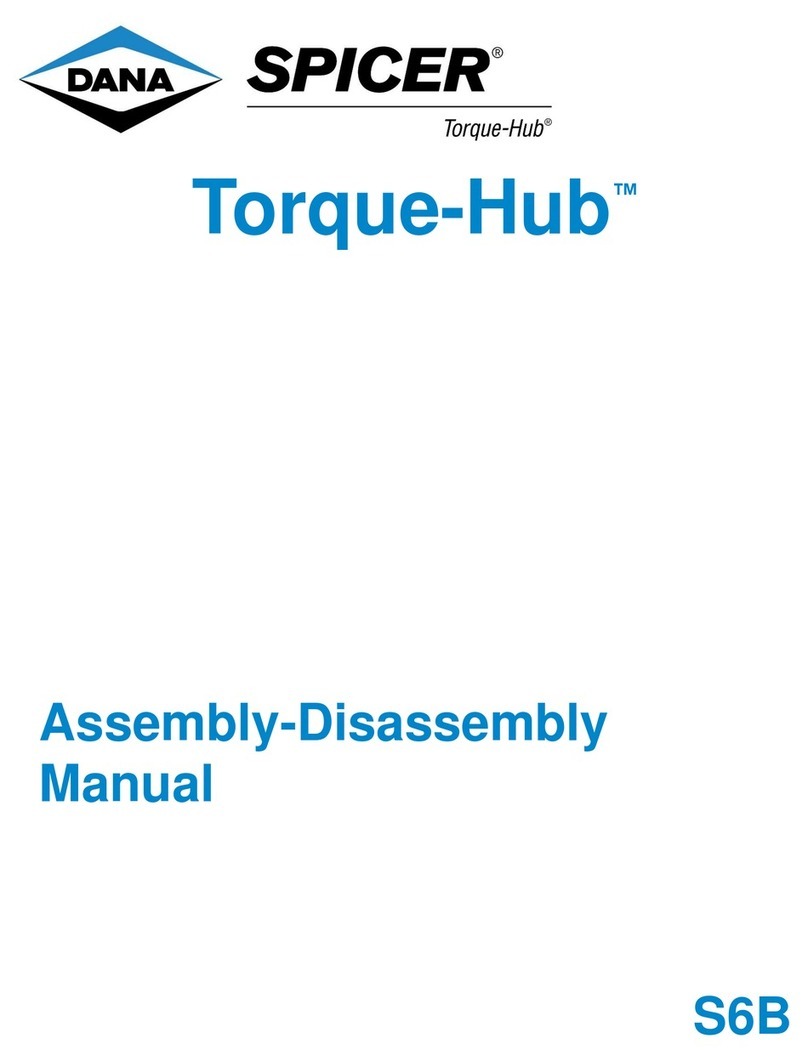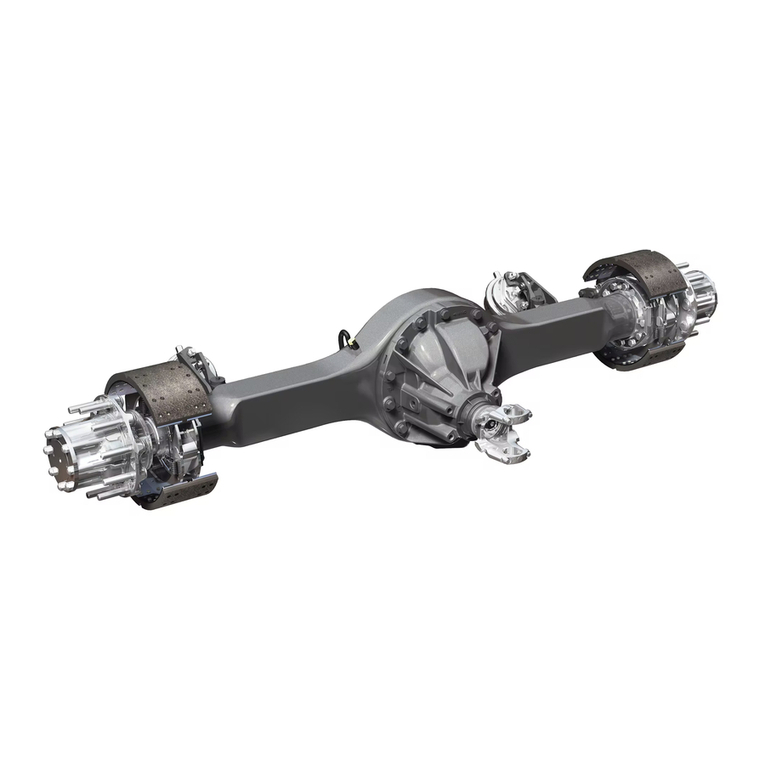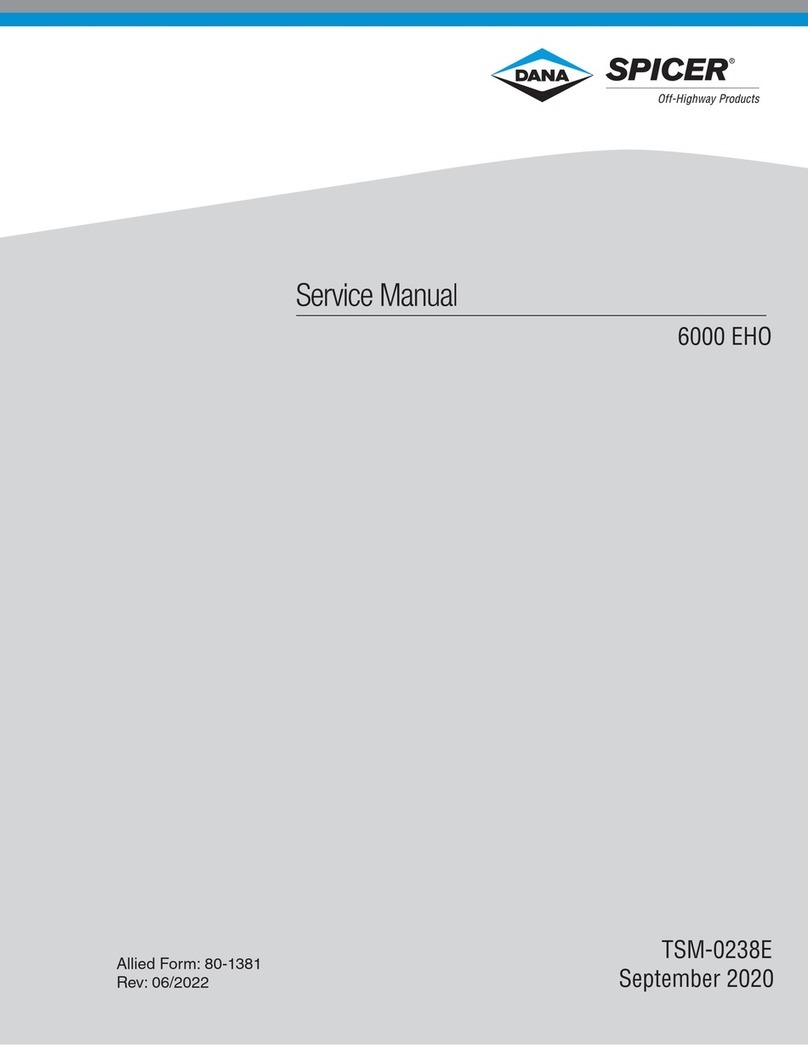Installation
Position 1-off gasket (5) over male pilot on brake housing
(4). Locate brake shaft (1) and secure brake in position
using 2-off ½” UNC mounting bolts in the through mounting
(fixing) holes provided. Connect hydraulic pressure supply
to brake pressure inlet port. Ensure that the hydraulic
pressure is set to the required level up to a maximum of
3000 psi (200 bar) and check that the brake disengages
and re-engages correctly.
Maintenance
The brake is required to be kept in good working order and
must be included in the planned maintenance program for
the equipment to which the brake is installed. This must
include torque testing together with inspection and replace-
ment of the working parts such as friction plates (3 & 6)
and, springs (22 & 23). The frequency of inspection
depends on the duty demanded of the brake.
Dismantling (and Dis-assembly)
To remove brake from its installed position, reverse
procedure previously described in the Installation instruc-
tions. Place the complete brake assembly on a clean, dry
workbench.
Remove external gaskets (5) as necessary.
REFER TO DIAGRAMS FOR THE FOLLOWING:
1)
Supporting brake on face ‘A’, remove the six socket
head cap screws (SHCS) and washers (items 13 & 14) in
equal increments to ensure the spring pressure within
the brake is reduced gradually and evenly. Alterna-
tively, if a press is available, the cylinder housing (8) can
be restrained on face ‘B’ while removing the six SHCS
and washers (13 & 14). The brake assembly can nowbe
fully dismantled and the partsexamined.
2)
Remove cylinder housing (8) and piston (9) sub-assem-
bly and dismantle if required, removing ‘O’ ring seals (15
& 17) and backing rings (16 & 18) as necessary.
3)
Remove gasket (7) from housing(2).
4)
Remove friction plates (3 & 6) and pressure plate (4).
Important: Friction faces must not come into contact
with oil or grease as this will seriously reduce the brake
torque capacity.
5)
Remove 2-off dowel pins(19).
6)
Remove springs (22 & 23).
Note: See chart on page 5 for spring arrangement and
quantities for the particular brake model used.
7)
Should it be necessary to replace ball bearing (10) or
shaft seal (12), reverse remainder of brakesub-assem-
bly, supporting on face ‘C’ of housing (2).
8)
Remove internal retaining ring(11).
9)
Using arbor press or similar to break ‘Loctite’ seal,
remove brake shaft (1) from housing (2) and layaside.
10)
Reverse housing (2) and press out ball bearing(10).
Shaft seal (12) can also be removed ifnecessary.
Examination
All components can now be examined and inspected,
paying particular attention to the following:
1)
Inspect friction plates (3 & 6) and friction surfaceon
pressure plate (4) for wear ordamage.
2)
Examine friction plates (3) and brake shaft (1) forwear
or damage to thesplines.
3)
Examine input and output splines of brake shaft (1)for
wear ordamage.
4)
Examine compression springs (22 & 23) for damageor
fatigue.
5)
Check ball bearing (10) for axial float or wear.
6)
Examine ‘O’ ring seals (15 & 17) and backing rings (16
& 18) for damage.
OBTAIN REPLACEMENT PARTS AS REQUIRED.
Assembly
Clean all parts thoroughly. Reverse procedure previously
outlined in Dismantling instructions taking particular care
with:
a)
Assembly of shaft seal (12).
b)
Assembly of bearing (10).
c)
Quantity and orientation of springs (22 &23).
Note: See chart on page 5 for spring quantities and
arrangement for the particular brake model used.
d)
Assembly sequence of friction plates (3 & 6). - See
diagram.
1)
Lightly lubricate rotary shaft seal (12) and assembleto
housing (2) taking care not to damage seallip.
2)
Apply ring of Loctite 641 or equivalent adhesive to full
circumference of housing (2) bearing recess adjacent to
shoulder. Apply complete coverage of Loctite 641 to
outside diameter of bearing (10) and assemble fully in
housing (2), retaining with internal retaining ring (11).
Remove excess adhesive with a clean cloth. Press shaft
(1)
through bearing (10), ensuring bearing inner ringis
adequately supported.
3)
Assemble correct quantity of springs (22 & 23) in
orientation required.

